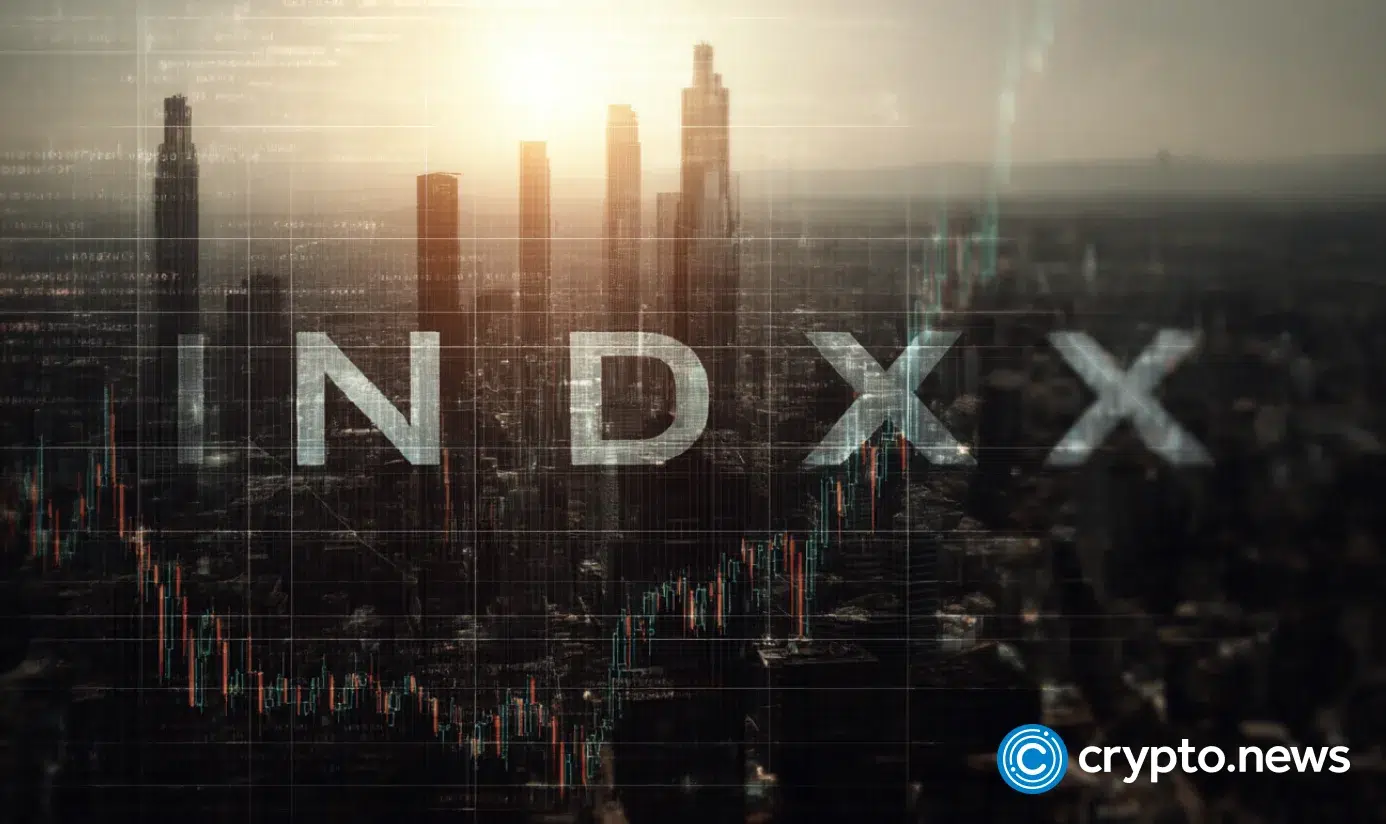
The concept of Bitcoin transferring past cryptocurrency wallets and into company treasuries has gained vital traction, largely due to Technique’s daring strikes to hodl billions of {dollars}’ price of Bitcoin.
As extra corporations discover or embrace Bitcoin (BTC) as a strategic reserve asset, buyers are on the lookout for new methods to acquire exposure to this pattern, with out essentially holding Bitcoin itself. That’s the place indices just like the Indxx Bitcoin Adopters Index are available. The index tracks a diversified basket of publicly traded stocks that maintain Bitcoin on their stability sheets.
Relatively than speculating immediately on cryptocurrency costs, it offers buyers, particularly these unable or unwilling to personal crypto immediately, a manner to acquire some type of exposure to Bitcoin by means of the companies which have built-in it into their monetary methods. With the launch of Grayscale’s Bitcoin Adopters ETF and extra establishments evaluating BTC’s function as a hedge or long-term asset, the timing couldn’t be extra related.
To raised perceive how this index works, its development methodology, and the way it balances exposure throughout sectors and main holdings, I spoke with Vaibhav Agarwal, Head of Product & Innovation at Indxx. On this Q&A, Agarwal breaks down how the index identifies a “Bitcoin Adopter,” why no single firm (particularly Strategy) can dominate it, and whether or not the thesis of Bitcoin as an inflation hedge actually holds up in apply.
crypto.information: What’s the choice methodology for the index? What qualifies a firm as a “Bitcoin Adopter”? Is there a minimal Bitcoin holding or proportion of property required, or do even small allocations depend? And the way regularly do you reconstitute the index to add new adopters or take away corporations which may unload their Bitcoin.
Vaibhav Agarwal: The choice methodology for the index relies on the classification of corporations as “Bitcoin Adopters,” as outlined by Indxx. An organization qualifies as a Bitcoin Adopter if it has publicly reported the possession of not less than 100 Bitcoin as a company treasury asset.
Inside this framework, corporations are additional categorized into two teams:
- Secondary Firms (Bitcoin Community Operators): These are corporations that derive not less than 50% of their income from Bitcoin mining actions.
- Major Firms: These embody all different corporations assembly the minimal Bitcoin holding threshold however not labeled as Secondary Firms.
There isn’t a required proportion of complete property allotted to Bitcoin—solely the minimal threshold of 100 Bitcoin holdings is taken into account for inclusion.
The index follows the quarterly reconstitution and rebalancing schedule. The reconstituted portfolio turns into efficient on the shut of the final buying and selling day of March, June, September and December every year. At the present time is named the ‘Reconstitution Efficient Day’.
CN: Technique alone holds greater than 550,000 BTC (and displaying no indicators of slowing down their purchases) which is a large chunk of the roughly 720,000 BTC that every one public corporations collectively maintain as of Q1 2025. How is the index weighted to guarantee one firm doesn’t dominate the fund? Are you able to present a little bit of commentary on say the top-five holdings, and whether or not any single title is capped in order that the index doesn’t evolve to turn out to be a de facto Technique tracker.
VA: Whereas it’s true that MicroStrategy, Inc. holds a vital share of the full Bitcoin held by public corporations—greater than 550,000 BTC as of Q1 2025—the index is particularly designed to stop any single firm from dominating the portfolio, no matter its Bitcoin holdings.
The index employs a capped weighting methodology to preserve diversification and scale back focus danger. Whereas securities are weighted primarily based on a mixture of their Bitcoin holdings and free float safety degree market capitalization however there may be a single safety cap of 20% is utilized to stop overexposure to anybody firm.
This structured strategy ensures that the index stays balanced and never overly reliant on a single title, even one as dominant as MicroStrategy.
For instance, as of the most recent reconstitution, MicroStrategy is capped at 20%. This illustrates that whereas massive holders like MicroStrategy are meaningfully represented, index caps and redistribution guidelines guarantee no single firm can flip the index into a de facto tracker of their inventory.
CN: Bitcoin-adopting corporations aren’t confined to anybody sector or trade. Are you able to give us a sense of this diversification? Are we largely speaking about tech companies and crypto-mining corporations, or do the constituents embody extra surprising gamers? How does Indxx make sure the index isn’t overly skewed towards one sector, or would this not be a difficulty?
VA: Sure, Bitcoin-adopting corporations span a big selection of sectors, providing vital diversification past simply tech companies and crypto-mining corporations. Whereas expertise and mining-related corporations are actually distinguished, the index additionally contains much less anticipated members from sectors similar to finance, shopper durables, vitality, healthcare, and extra.
The sector breakdown of the index, primarily based on the most recent reconstitution portfolio knowledge, is as follows:
| Factset_Sector | Weights |
| Know-how Providers | 40.88% |
| Finance | 20.44% |
| Shopper Durables | 20.00% |
| Shopper Providers | 5.11% |
| Retail Commerce | 4.50% |
| Power Minerals | 4.27% |
| Well being Know-how | 3.26% |
| Producer Manufacturing | 0.76% |
| Communications | 0.33% |
| Distribution Providers | 0.15% |
| Business Providers | 0.15% |
| Digital Know-how | 0.15% |
This breakdown illustrates that the index contains corporations from a numerous mixture of industries, not restricted to these historically related to Bitcoin or digital property.
As for guaranteeing sector stability, whereas the index isn’t explicitly sector-capped, the inclusion standards—primarily based on Bitcoin holdings and firm classifications—naturally leads to broad-based exposure. As extra corporations throughout totally different sectors undertake Bitcoin, this diversification is predicted to proceed bettering over time.
So, whereas some sectors like expertise are at the moment extra distinguished due to early adoption developments, the index isn’t overly skewed and displays the evolving and increasing nature of Bitcoin adoption throughout the company panorama.
CN: Do you discover that the businesses in your index genuinely view Bitcoin as an inflation hedge or security internet, or are they primarily making a speculative wager on Bitcoin’s worth appreciation? Given latest inflationary pressures, have these companies really benefited from holding BTC by way of preserving buying energy, or is it too early (or too risky) to inform? Basically, how convincing is the “Bitcoin as an inflation hedge” thesis out of your perspective.
VA: Many corporations within the index understand Bitcoin as a hedge in opposition to inflation. A survey by Nickel Digital Asset Administration revealed that 73% {of professional} buyers think about Bitcoin a viable asset to hedge in opposition to rising inflation, citing its finite provide and immunity to inflationary manipulation affecting conventional currencies. Nonetheless, some research counsel that Bitcoin’s response to inflationary surprises has been unfavorable, indicating that its function as an inflation hedge continues to be beneath scrutiny.
Concerning latest efficiency, Bitcoin has proven resilience amid inflationary pressures, outperforming conventional property like shares and the greenback in periods of market volatility. However, its excessive volatility implies that whereas it could supply long-term advantages, short-term fluctuations might be vital.
CN: How is the index getting ready for varied future situations, starting from Bitcoin turning into a mainstream reserve asset for a lot of firms or momentum grinding to a near-halt and solely a area of interest subset of corporations are sticking with a Bitcoin treasury technique?
VA: The index is designed with flexibility to adapt to totally different future situations. If Bitcoin turns into a mainstream reserve asset, the index’s construction permits for elevated illustration of corporations with vital Bitcoin holdings throughout varied sectors. Conversely, if adoption slows, the quarterly reconstitution ensures that solely corporations assembly the standards stay, sustaining the index’s relevance and efficiency.
This adaptability is essential because the panorama of Bitcoin adoption continues to evolve. Notably, the variety of publicly traded corporations holding Bitcoin has surged to 80 in 2025, a 142% enhance from simply 33 in 2023. This pattern displays the rising acceptance of Bitcoin as each a strategic reserve asset and a hedge in opposition to inflation.
Because the adoption of Bitcoin as a company treasury technique continues to develop, the index stays poised to precisely replicate these adjustments and adapt to the evolving market dynamics.
CN: Grayscale’s new Bitcoin Adopters ETF offers buyers exposure to corporations holding Bitcoin of their company treasury. This funding instrument is actually distinctive and thrilling, however skeptics argue that merely holding Bitcoin doesn’t make a firm a higher or extra progressive funding. Most not too long ago, Technique, a core constituent within the Adopters index, reported its fifth consecutive quarterly loss. Given the poor latest monetary efficiency, how would you reply to critics who argue that a daring treasury transfer doesn’t make a firm worthwhile.
VA: Whereas it’s true that a daring treasury transfer, similar to holding Bitcoin—doesn’t robotically lead to profitability, it might present a strategic cushion by means of potential appreciation in asset worth over time. Bitcoin’s historic efficiency, regardless of volatility, has proven vital long-term beneficial properties, which can assist strengthen a firm’s stability sheet throughout beneficial market circumstances.
That mentioned, the index doesn’t depend on a single firm’s monetary efficiency. It contains a diversified set of corporations throughout varied sectors which have built-in Bitcoin into their broader enterprise methods. As an illustration, Tesla has used Bitcoin as a part of its treasury diversification, whereas Coinbase, by nature of its core operations, is deeply tied to the Bitcoin ecosystem and continues to play a central function in crypto infrastructure.
Importantly, the index is reconstituted quarterly, guaranteeing that solely corporations actively sustaining substantial Bitcoin holdings stay included. This helps preserve relevance, filters out passive or short-lived adopters, and ensures the index displays significant, strategic Bitcoin integration—not simply speculative strikes.
In abstract, whereas Bitcoin possession isn’t a substitute for sound enterprise fundamentals, it may be a useful treasury element that offers upside potential and hedging advantages in an evolving monetary panorama.
CN: If an investor is bullish on Bitcoin as a treasury asset, why not simply purchase Bitcoin itself or a Bitcoin ETF? What benefits do you see in holding a basket of “Bitcoin adopter” versus the digital coin outright? Would you say proudly owning the ETF is considerably much less risky than holding Bitcoin outright, or may it in some circumstances be extra risky, on condition that some constituent corporations may use leverage or face stock-specific dangers on high of Bitcoin exposure?
VA: If an investor is bullish on Bitcoin as a treasury asset, merely shopping for Bitcoin or a Bitcoin ETF may appear to be probably the most easy path. Bitcoin itself offers pure exposure to its worth actions—splendid for many who need direct participation within the asset’s potential upside. Equally, a Bitcoin ETF supplies direct worth exposure with out the necessity for self-custody or navigating crypto exchanges, making it simpler to entry by way of conventional brokerage accounts.
Nonetheless, holding a basket of “Bitcoin adopter” corporations—companies that maintain Bitcoin on their stability sheets—offers a distinct and doubtlessly strategic different:
- Diversification: Relatively than being tied solely to Bitcoin’s worth, this kind of ETF spreads exposure throughout a number of corporations from varied sectors (e.g., tech, fintech, crypto mining), every with distinctive enterprise fashions and income sources.
- Enterprise Fundamentals: Many of those corporations generate earnings from core operations, providing a cushion throughout Bitcoin downturns and serving to scale back dependency on crypto worth cycles alone.
- Strategic Bitcoin Exposure: Companies holding Bitcoin as a treasury asset usually accomplish that as a part of a long-term technique, doubtlessly enhancing their monetary resilience or enchantment to buyers searching for digital asset exposure.
- Optionality and Development Potential: These corporations could profit not solely from Bitcoin appreciation but in addition from broader developments like blockchain adoption or fintech development, including a number of layers of return potential.
Concerning volatility, it’s not all the time the case that a Bitcoin adopter ETF is much less risky than Bitcoin itself. Whereas broader firm exposure can clean short-term fluctuations, stock-specific dangers, use of leverage, or poor administration selections can amplify volatility. In some cases, the ETF could even be extra risky due to these further variables. However, a well-constructed and diversified ETF of Bitcoin-adopting companies can supply a extra balanced and fewer immediately correlated expertise than proudly owning Bitcoin outright.
In abstract, for buyers bullish on Bitcoin however searching for a totally different risk-return profile, a “Bitcoin adopter” ETF offers an interesting mixture of crypto exposure and fairness fundamentals. It blends the expansion potential of Bitcoin with the operational stability of established companies, doubtlessly delivering a extra resilient and strategically diversified funding.



